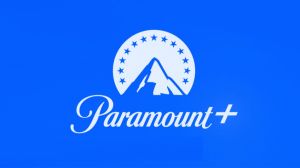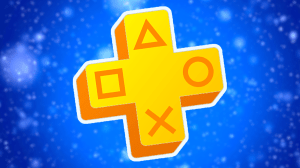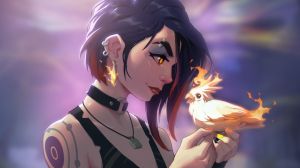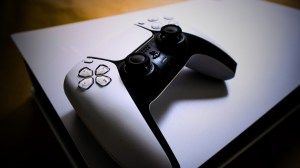Iwájú is now streaming with Disney+ and we got to talk with the creative team behind it all about making their debut, showcasing a futuristic vision of Lagos, Nigeria, their wider universe, inspirations and more! Iwájú is a very intriguing project as it’s the first major collaboration between Disney Animation Studios and Pan-African entertainment company Kugali, and has been in the works for quite some time. First announced a few years ago, the fruits of their efforts have finally launched as fans have been able to check out the new series with Disney+ around the world.
Videos by ComicBook.com
Iwájú is a big series full of firsts for both Disney Animation Studios and Kugali. Not only is it Kugali’s first major animated project, but it was also Disney’s first major collaboration with an outside studio for a Disney+ release. With this being such a massive occasion, ComicBook.com got the chance to speak with the minds behind it all, director and writer Olufikayo Ziki Adeola, production designer Hamid Ibrahim, and cultural consultant Tolu Olowofoyeku about how they all worked together with Disney to bring this new vision of Nigeria to life.
Speaking on their feelings about making their Disney+ debut around the world, anime and other art inspirations, potential expansions of the Iwájú universe following this limited series and more, you can read on below for our full interview (which has been edited for clarity)!
Animation Inspirations
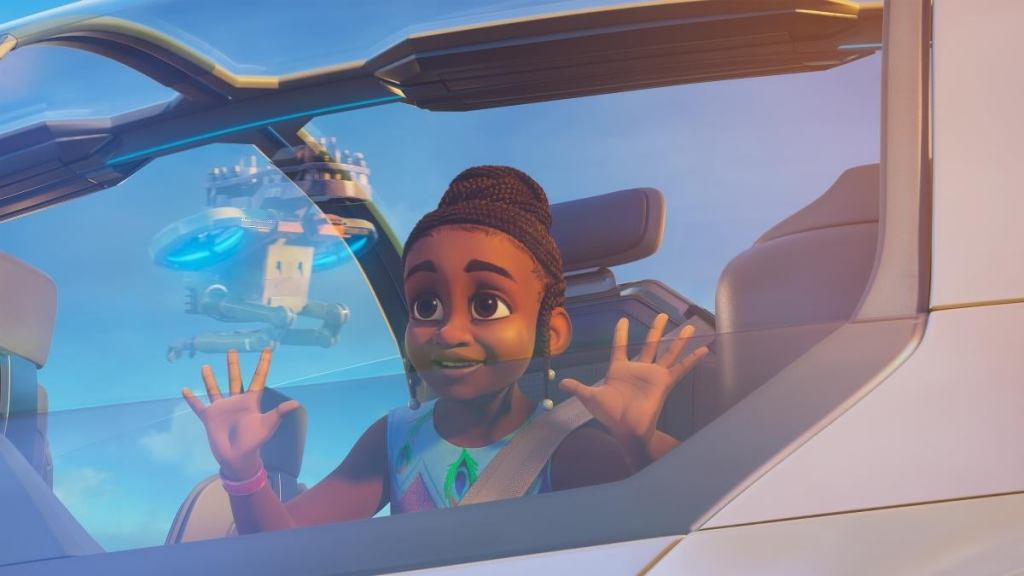
I’m very much inspired by my comic books, games, animation, and what’s great to hear about the three of you too is that you all were also inspired by some of those same things but have taken it to that next step and have actually gotten to create something. So I just wanted to start out, speaking as Nick Valdez at Comicbook.com, what your favorite comic books, anime, and video games are that all helped to inspire what Iwájú became?
TOLU OLOWOFOYEKU: Oh, that’s like two separate questions because all my favorite stuff I can list, but they didn’t really inspire Iwájú that much because the inspiration for Iwájú is almost exclusively Lagos, Nigeria.
OLUFIKAYO ZIKI ADEOLA: What I would say though is that I do have an anecdote that, I think, led to Iwájú in some ways because the foundation of Tola and I’s friendship was based on many of these things that you mentioned. But when I was 13 years old, I decided I was tired of the nerd life. I was honestly, one of the cool kids that play sports, be popular, and I completely abandoned all of these things in that, from the ages of 13 to 17, I didn’t touch a single comic book. I didn’t play any video games. I didn’t do any of that stuff, but Tola wouldn’t let me rest. All the time, he’d be sending me comic books, animes and stuff like that.
And then eventually, I think, I was about 17 years old, I was like, “Okay, fine. Let me see what this guy’s got for me.” And that was my second foray into anime. So it was actually an anime called Bleach that I started to watch and my mind was blown. I was like, “Man, what have I been missing for the last four years? And so that rekindled my interest in the world of using us and animation to tell stories. And I think if that hadn’t happened, I probably would’ve become an investment banker or something and would never be here today.
HAMID IBRAHIM: Yeah, my expression was actually slightly different. I’m less of a comic book person. I’ve read a few comics, but nowhere nearly as much as them two. My first inspiration was [Leonardo] da Vinci, the Mona Lisa. I remember it popped up in an advertisement. I was in Kenya at this time. I was probably under five years old. It’s one of my oldest memories. And it popped up, and something about the image struck me.
And then I went in our Kenyan internet, where you spend at that time, I remember them of Shilling, but in 30 minutes you can only Google two Wikipedia pages. And I Googled Leonardo da Vinci, I Googled Mona Lisa. Then I found Da Vinci, the maker. And his story is so incredible that it became an idol for me. So I would say step one. And then that was for art in general. And then for animation, it was The Lion King. So I grew up in Kenya. So I was born in Uganda, spent 10 years in Kenya, so Ngonya Swahili, which is I speak Swahili, and that’s a language that’s spoken in The Lion King in bits and pieces, right?
When I heard them speaking Swahili, it was that thing of it just blew my mind and made me fall in love with animation and what it can do. And then from there, the role just kept on going. So I inspired by Mona Lisa, then Lion King, are the two co-inspirations for me. So I always liked art and design in terms of designing and merging tech and art. I’ve always loved to do that. How to combine the two places in one… There are two things into one dish, if I’m to call it that. And then animation in general, I love how animation would make somebody feel and captivate you in a way that a lot of mediums cannot do. So that was my two main inspirations.
Feelings About Launch
It’s so cool to hear how it all came together because this all started, the kernel of it was a challenge to Disney to then eventually working together with them. So how does it feel now that you’ve gone through so much development and here we’re at the eve of Iwájú‘s release? Has it sunk in yet that it’s almost here?
OLOWOFOYEKU: I guess because we’ve had some early screenings where a few people, a small handful, some friends, some family, even the people who actually walked on the show, we’ve had private screenings where, maybe, the storyboard artists after story-boarding, they never saw the show again. They moved on to work on another project, but then during the private screening, they then see the final version of this thing, this story-boarded two or three years ago. Just those little private screenings, seeing people’s reactions. That’s what has made it feel like, “Wow, okay, this thing is actually here and people actually like it.”
And especially watching the reactions of Nigerians, because I think Nigerians, there’s a certain level of expectation that you think it’s going to be kind of Nigerian, but it’ll still feel a bit American. And then they watch it and they’re like, “Oh wait, it’s entirely Nigerian. It feels 100% legit.” And I think watching those reactions just drives it home that we actually did this thing.
Introducing Futuristic Lagos
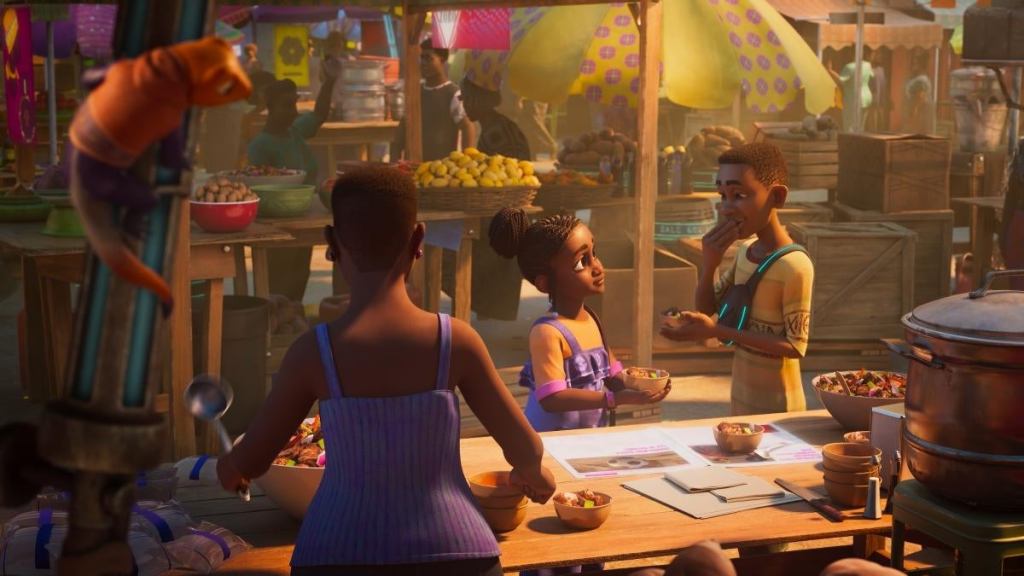
One of the things that impressed me so much about Iwájú is that you really put the realism in magical realism. It’s a future version of [Lagos, Nigeria]. There’s a lot of good technology advances and stuff like that, but you are very careful to also show the economic and social disparities within Lagos itself that still remain. So what was the process like of balancing that portrayal of that realness without really losing the optimism for the future?
ADEOLA: Well, I think first of all, as a writer, I like stories of triumph, even if I like stories that definitely have difficult themes, sometimes even really dark themes, but ultimately have an underlying spirit of triumph because I think optimism is very important… Hope and optimism are very important to the human spirit. And so I wanted to ensure that the story didn’t shy away from darker and harsher themes, but ultimately… it is ultimately a tale of victory. I think that’s the most important thing, is that as long as there is hope and there is victory, people won’t necessarily be too bogged down in the darker themes.
I think that through the character of Tola, we were able to do that because she’s an aspirational young girl, but then she makes mistakes, and she has moments of doubt and also moments of realization where we’re able to lean a little bit more into some of the harsher realities in the story. Same thing with Kole as well, because he also experiences a degree of triumph. So whenever our characters experience low moments, we can lean into those darker themes. But then when they’re able to grow and experience victory in their respective areas where we’re like, “Yes, they did it,” and that way we have that medley that we can enjoy.
Crafting a Disney Villain
That comes through, especially with Bode, because he is the villain of the series. But he has so many layers that make him a complicated antagonist. Although he has a physical presence — unfortunately it is a small spoiler for the show — he’s never really physical. It never crosses that line. It’s never really a lot of outward violence. So when you come to crafting a villain like Bode, who started out with a good reason [for his actions], what was it like making sure that you had an antagonist that also danced along those lines?
ADEOLA: Well, first of all, I think that sometimes subtlety is really powerful. If Bode was just punching walls and extremely violent, then sometimes the imagination, actually imagination is what is the scariest thing. It’s not necessarily seeing what happens, what you are imagining to happen. And so because Bode has this menacing presence, that thread of what could he do, identifying sometimes is really, really effective in creating the aura around the character. So I think that helped, in any case, in terms of also making sure that the show could remain family-friendly. And I think focusing on the more psychological aspects of the threats were really important.
So when we look at, for example, when we just look at Bode and Tola, you see the size difference when they meet each other. You don’t need to say anything more to be perfectly honest. And then the last thing you said about him being layered as a character was really, really important because I personally like characters that have complexity. Bode does have good reasons to be where he is at. And in many ways, you look at a character like Kole who in some ways is actually being pushed towards the same path that Bode is being pushed towards. But again, I go back to that thread of triumph. He’s able to fight against those temptations or those forces pulling him in the wrong direction and triumph and still remain a good person.
Ija Mode Design and Inspirations
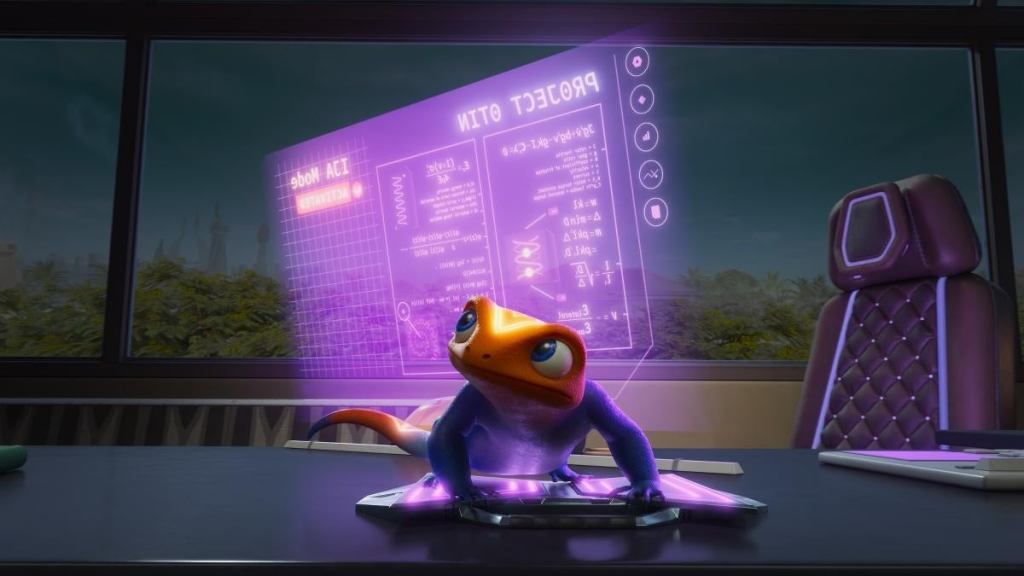
So that all leads into the final section of the show when we finally get Ija Mode. How did the Ija Mode design come together, starting from Otin’s design as a lizard, and then to the full transformation that we get?
IBRAHIM: In terms of Ija Mode and Otin’s design… So Otin’s design in the beginning is inspired by real life lizard that’s native to West Africa. So it’s something very unique in Lagos.
OLOWOFOYEKU: It’s called an Agama lizard. It has the orange head and blue body.
IBRAHIM: Yes the Agama lizard, in this case, I just pulled what a real life Agama lizard would be and try and see a way that one, I can make it fit into the world I was building. And then the second one was, you see, he has a little hood on it. I wanted it to be something different. And I was doing a lot of research into lizards, and I’m going to be honest, it was a lot more hilarious than I thought it was going to be because I was like, these little icky things, I didn’t see the fun they could bring. I found a lot of that stuff, and a lot of people who had pet lizards actually put clothes on them. So in terms of the Otin design, it came from that.
Then if you notice the pattern on his hoodie, and also the glowing patterns he has on him, it’s a repeated pattern that’s part of…technically every character has their own pattern. It’s kind of part of Tunde’s pattern that’s pulled out and added to Otin. But if you very keep a laser eye on that, you’ll see that. Now in terms of transformation from Otin, the character into Ija Mode, we wanted to use the mechanics that are plausible in the world we’re building in that to make a believable world, everything has to make sense inside it, right?
So in our world, we have something we’re calling hard lights. So humans find a way to tame light to where they could be physically and touched. So when Otin is going into Ija Mode, it’s pretty much light particles. The mechanics of how we did it in our world is, there has to be a beginning point and an end point. And that creates a very interesting design when we now pass it down to, because I worked with a lot of designers creating this, right?
This one specifically was Jones, and I passed it down to him and I was like, “Okay, it’s going to be a thing where we’re trying to expand this small thing which fit into, this small body, into this giant thing. So it has to just have gaps inside it.” So it’s almost like a very natural process to where we ended up where we wanted to end up and wanted Ija Mode to be very, very menacing. So that’s how you see he gets the red eyes. And then obviously he has a tail. It’s almost like a scorpion when he puts up the tail. So we drew, it was a very natural process and very wild organic from real like Otin, which is our show wants to pull the originality of the sci-fi-ness from the real-life Lagos or real-life Otin, all the way to the mechanics we added in the show, which were unique to build in Ija Mode all the way at the end.
Is that the same philosophy that went into Happiness’ Gauntlet when she uses it?
IBRAHIM: Yeah.
Oh, cool! Because such a cool moment too, when we finally get that little-
IBRAHIM: Yeah, I love it. Love it. And one thing if you can notice is in that scene itself, when that, you know what happens… spoilers, right? You can see a little clash between how the good guys are using technology and the bad guys are using technology, in different angles, and you see it physically in the scene in a very explosive way. And that’s one of my favorite scenes because of that.
Any Potential for More Iwájú?
It’s such a fun payoff! Just as a final question, I do have to be a bit selfish because Iwájú does feel like a complete story. Everything feels like it’s wrapped up nicely. But it’s such a cool world. It’s so huge. Is there any potential for any more stories from either the world you built in Iwájúor in Lagos?
ADEOLA: Yeah. I mean, what we can say is that there are other avenues through which we’re going to explore the world of Iwájú, such as a mobile game that is coming out on the same day as the series. We also have a junior novelization as well. So these are two examples of ways in which fans of the story will be able to continue to immerse themselves in the world of Iwájú.
IBRAHIM: I’d also like to add, because we’re a comic book company, if you want to see stories inspired by African culture, because this is specifically Lqgos, I will make sure to hear it there. But we have comic books from all over the continent. If you enjoy Iwájú, you probably will enjoy some of those. And you even have a collaboration with Disney Publishing of some books that may come down in the future, which are comic books. And as well, we are inspiring to create more IP when it comes to animation as well. So fingers crossed, we’ll make something come through as soon as we possibly can.
Iwájú is now streaming on Disney+.

